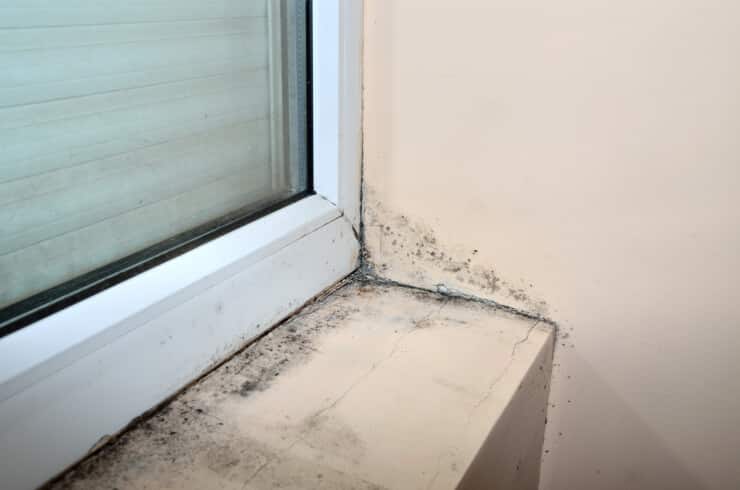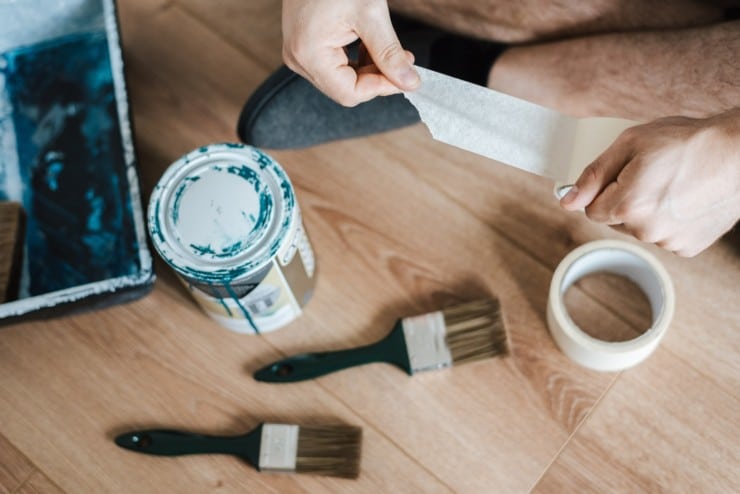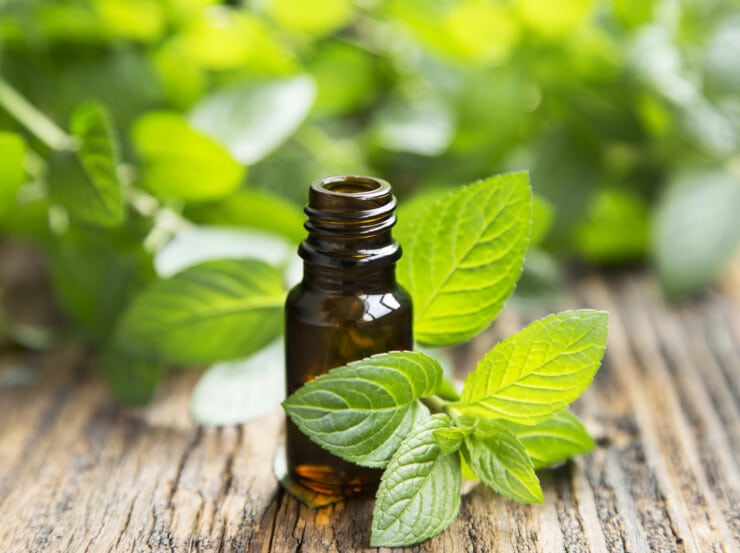Why Is There A Strange Yeasty Smell In My House?
There’s nothing quite like the comforting aroma of a recently baked loaf of bread emanating from your oven – it’s one of life’s delightful simplicities.
But what about when you’re not baking and there seems to be an unexplainable yeasty odor permeating throughout your home?
There is likely a perfectly logical explanation behind that strange smell, and we’re here to help you get to the bottom of it.
Investigating Potential Mold Issues

One of the first steps in gaining control over your home environment is uncovering potential causes behind that strange yeasty smell.
An important aspect to consider when investigating this issue is mold prevention.
Mold can not only produce an unpleasant odor, but it can also pose several health risks for you and your family members.
Addressing mold-related concerns with a sense of mastery starts with understanding what conditions foster its growth.
Moisture, warmth, and poor ventilation are all factors that create a perfect breeding ground for mold spores to thrive.
By identifying areas in your house where these elements converge – such as basements, bathrooms or even closets – you’ll be better equipped to tackle the problem head-on and prevent future occurrences from happening again.
Now that you’re aware of what could potentially be causing that unwanted scent in your abode, it’s time to take charge by recognizing the signs of mold presence early on and addressing them promptly.
You may want to invest in monitoring devices like hygrometers or moisture meters to keep track of humidity levels within your living spaces.
Stay vigilant about maintaining proper ventilation throughout your home and cleaning up any water leaks or spills right away.
This proactive approach will not only help minimize health risks associated with mold exposure but also empower you to maintain a fresh-smelling, safe haven for yourself and loved ones.
Identifying Hidden Food Sources
The first step you can do is identifying hidden food sources that may be causing this olfactory offense.
That forgotten jar of expired condiments tucked away at the back of your fridge could very well be harboring some funky smells that are permeating through your living space.
Don’t forget to check for any hidden pantry pests – these tiny invaders can hitchhike their way into your abode via grocery bags, infesting staple items like flour and grains which consequently emit unpleasant odors when spoiled or contaminated.
Be thorough in assessing every nook and cranny where potential culprits might hide – leaving no stone unturned (or shelf unexamined) ensures success in conquering those pesky scents invading your sanctuary.
Assessing Your HVAC System

Now that you’ve identified and dealt with hidden food sources, it’s time to inspect your heating, ventilation, and air conditioning (HVAC) system.
It could be the culprit behind the strange yeasty smell wafting through your home.
A well-functioning HVAC system is essential not only for maintaining comfortable temperatures but also for ensuring good indoor air quality.
Regular HVAC maintenance can help prevent unpleasant odors in your home while also improving energy efficiency and prolonging the life of your equipment.
One crucial aspect of HVAC maintenance is air filter replacement.
Air filters trap dust, allergens, pet dander, and other particles from circulating throughout your home.
Over time, these trapped particles can create a musty or stale odor if they aren’t removed by replacing the filter regularly.
Clogged air filters force your HVAC system to work harder than necessary to maintain optimal comfort levels.
This inefficiency results in higher energy bills and increased wear on your equipment.
So, roll up your sleeves and inspect your HVAC system!
Check for blocked vents or ducts that may restrict airflow — clearing any obstructions will improve both efficiency and air quality.
Replace dirty air filters as needed.
Most experts recommend changing them every 1-3 months depending on usage patterns and environmental factors like pets or allergy sufferers living in the household.
By taking these proactive measures to assess and maintain your HVAC system, you’ll soon banish that mysterious yeasty aroma from your house while enjoying better indoor air quality overall.
Uncovering Hidden Plumbing Problems
It’s essential to consider hidden plumbing problems as a possible culprit.
Uncovering these issues can not only solve the mystery of the unpleasant odor but also save you from potential costly repairs down the road.
One such plumbing problem could be hidden leaks within your walls or floors.
These sneaky water intruders can lead to dampness and mold growth, which might give off that strange yeasty scent you’ve been noticing.
To track down any concealed leaks, keep an eye out for telltale signs like discolored patches on walls or ceilings, warped flooring, or unexplained spikes in your water bill.
Don’t hesitate to call in a professional plumber if you suspect there may be more than meets the eye.
They possess the necessary tools and expertise to pinpoint even the most elusive leaks.
Now let’s talk about pipe deterioration – another common issue that could contribute to unwanted smells around your abode.
Over time, pipes made from materials like galvanized steel or cast iron are prone to corrosion and rust buildup, eventually leading to cracks and even collapses.
This kind of damage can result in sewer gases seeping into your living spaces – hence, that funky aroma!
Regular inspection and maintenance by a qualified plumber will help ensure that any signs of wear and tear are caught early on before becoming full-blown disasters (and persistent odors).
Cleaning And Deodorizing Your Home Effectively

Now that we’ve identified the possible reasons behind that peculiar yeasty smell, it’s time to take action and restore freshness in your home.
A clean and pleasant environment not only lifts our spirits but also contributes to a healthier lifestyle.
In this section, we will delve into effective cleaning and deodorizing techniques using both natural remedies and chemical options.
To ensure you tackle every corner of your house and eliminate any lingering odors, here is a comprehensive checklist for you:
- Ventilation: Open windows and doors frequently to let fresh air circulate throughout your home.
- Baking soda: Sprinkle baking soda on carpets, rugs, and upholstery; allow it to sit overnight then vacuum thoroughly.
- Vinegar: Mix equal parts white vinegar with water in a spray bottle – use as an all-purpose cleaner on surfaces where mold or mildew might be hiding.
- Essential oils: Add a few drops of essential oil (e.g., lavender, eucalyptus) to water-filled diffusers or humidifiers for ongoing odor control.
- Commercial products: Consider purchasing specialized odor eliminators if natural remedies are not enough.
You may need to repeat some processes or experiment with different methods before achieving the desired results.
With determination and careful attention to detail, soon enough the strange yeasty smell will become nothing more than a distant memory.
Frequently Asked Questions
Can Certain Types Of Indoor Plants Contribute To The Yeasty Smell In My House?
Don’t judge a book by its cover, as certain types of indoor plants may indeed contribute to the yeasty smell in your house.
Unusual houseplants and improper indoor plant care can lead to some unexpected scents wafting through your living space.
Some plants naturally emit odors that might be reminiscent of yeast or fermentation, while others could harbor mold or mildew if not properly cared for, enhancing that yeasty aroma you’ve been noticing.
What Are Some Common Household Items Or Materials That Can Absorb And Retain Yeasty Odors?
Common household items like baking soda, activated charcoal, and white vinegar work wonders when it comes to neutralizing unwanted odors.
Simply place bowls of these substances around the area where the smell is most prominent or use them as cleaning agents for surfaces harboring those persistent scents.
You shouls also consider investing in air purifiers or zeolite crystals as both are highly effective at trapping and eliminating nasty aromas.
How Can I Determine If The Yeasty Smell Is Coming From My Neighbors Or An External Source Outside My Home?
Start by observing your neighbor’s habits – are they constantly carrying bags of flour and yeast into their home?
Do you hear incessant kneading at all hours of the night? If so, congratulations! You’ve found the source (and perhaps a burgeoning bread enthusiast).
However, if your neighbors seem innocent enough, consider exploring external factors like nearby dumpsters or even industrial buildings that could be contributing to these olfactory offenses.
Are There Any Health Risks Associated With Long-Term Exposure To A Yeasty Smell In My Home?
While it’s natural to be concerned about the health implications of a persistent yeasty smell in your home, there’s good news: generally speaking, such odors are not harmful.
However, if the source of the smell is mold or mildew growth due to excess moisture, then addressing those issues and finding odor solutions should become a priority as exposure to mold spores can lead to respiratory problems and other ailments over time.
To ensure you’re safeguarding your well-being and achieving peace of mind, take proactive steps in identifying and eliminating any potential sources of unwanted smells while maintaining proper ventilation throughout your living spaces.
How Can I Prevent The Yeasty Smell From Returning Once I’ve Identified And Addressed The Source?
On average, a normal person takes about 20,000 breaths in a day.
It’s essential to keep your home smelling fresh and clean for all of those inhales.
To prevent a yeasty smell from returning after addressing the source, consider using odor neutralizers designed specifically for musty smells.
These products can help eliminate any lingering odors and provide a fresh scent throughout your space.
Make ventilation improvements in areas prone to dampness or poor air circulation, such as basements, bathrooms, and kitchens.
Just make sure to maintain a clean environment with proper ventilation and follow effective odor control solutions— and you’re on your way to an odor-free home.
Final Thoughts
It’s essential to identify the source of that strange yeasty smell in your home, as it could potentially pose health risks.
Don’t forget that about 20% of indoor plants can contribute to such odors, and various household items or materials might retain them.
Once you’ve found and addressed the issue, take preventative measures to ensure the smell doesn’t return.







